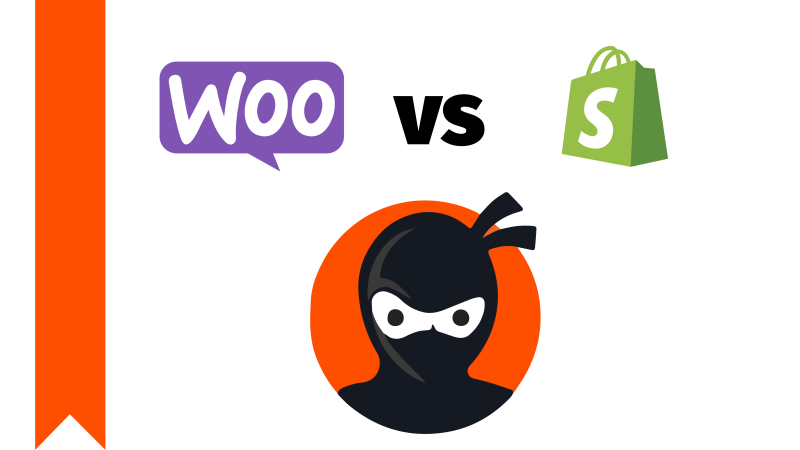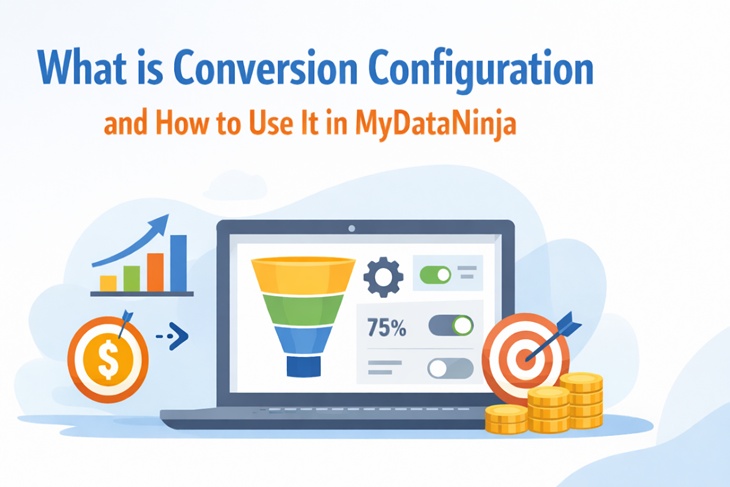
If you are planning to create a new online store in the near future, the first thing you need to know is that you will need an E-commerce platform. Well, lucky for you, there are two of the biggest platforms there, named Shopify and Woocommerce, but unlucky for you, it is hard to make a decision between those two, especially if you are a beginner.
In my opinion, the best platform for you depends on your needs, but today I will give you a comparison between these two GOATs, let’s dive in.
Which One is Easier to Use – WooCommerce Vs Shopify
For small and beginner businesses, the most important thing to consider is which platform is better for them. Overall, Shopify is easier to use but has many restrictions when it comes to customization, while WooCommerce is a little harder to use and needs a minimal knowledge of coding, but has many customization options.
For a more beginner-friendly option, you obviously will choose Shopify, but if you have experience or knowledge, you can easily choose WooCommerce as well. But still, it’s you who has to make the decition.
Understanding Woocommerce and Shopify

Now, let’s discuss what are Shopify and WooCommerce:
Shopify:
Shopify is an E-commerce platform that allows individuals and businesses to create and manage their online stores. It provides users with a variety of customizable templates to design their storefronts, along with tools to handle inventory, payments, shipping, and marketing.
With its user-friendly interface and amazing support system, Shopify makes it easy for anyone, regardless of technical skill, to set up and run a successful online business. Whether you’re selling physical products, digital downloads, or services, Shopify offers a thorough solution to help you reach customers and grow your business online.
WooCommerce:
WooCommerce is a powerful, open-source E-commerce plugin designed specifically for WordPress websites. It transforms a standard WordPress site into a fully functional online store, offering a wide range of features such as product listings, payment processing, inventory management, and shipping options.
Highly customizable and user-friendly, WooCommerce allows businesses of all sizes to create and manage their online stores easily, using the flexibility and extensive plugin ecosystem of WordPress. Because it is built on WordPress, Woocommerce has more than 59,000 free plugins available to go with many other paid plugins.
Now that you know what those two are, let’s start a proper comparison.
Scalability
When it comes to scalability, if your business is booming, Shopify can withstand any amount of users with ease. It also comes with many great tools for inventory management, secure payment gateways, and marketing tools, also has many apps, such as MyDataNinja.
When it comes to WooCommerce, the scalability depends on the kind of hosting provider you choose to use. It is an open-source platform that provides endless customization options and flexibility, but the bigger your store is, the more expensive WooCommerce gets, making it a less budget-friendly option for you. Also offers a wide variety of plugins, including the MyDataNinja plugin.
Themes and Custumizacion
Shopify offers extensive customization options that allow users to create a unique and personalized online store. With a wide selection of themes, both free and premium, users can choose a design that fits their brand aesthetic. Each theme is fully customizable, enabling changes in layout, colors, fonts, and more through an intuitive drag-and-drop editor.
For more advanced customizations, users can edit the underlying HTML and CSS, or use Shopify’s Liquid template language. Additionally, Shopify’s app store offers a multitude of plugins and extensions to add specific functionalities, ensuring that every aspect of the store can be tailored to meet the needs of the business.
WooCommerce offers extensive customization options, making it a versatile choice for WordPress users looking to create a unique online store. With a vast array of themes available, you can select and customize the look and feel of your store to match your brand identity.
Its flexibility allows for adjustments in layout, colors, fonts, and more through the WordPress Customizer. Additionally, it supports custom code for advanced modifications. The platform also boasts a robust ecosystem of plugins and extensions, enabling you to add specific features and functionalities to your store, ensuring it meets all your business requirements.
Price and Customer Support
The pricing differences between Shopify and WooCommerce can be significant, reflecting their different approaches and structures.
Shopify:

- Basic Plan: $32 per month
- Shopify Plan: $92 per month
- Advanced Plan: $399 per month
- Plus plan: $2,300 per month
- Transaction Fees: Shopify charges transaction fees (ranging from 2.9% + 30¢ to 2.4% + 30¢ per transaction) unless you use Shopify Payments.
- Additional Costs: Costs for premium themes, apps, and other extensions.
WooCommerce:
- Plugin Cost: Free to use the core WooCommerce plugin.
- Hosting: Requires a hosting plan (costs vary, but typically range from $5 to $50+ per month depending on the provider and plan).
- Domain Name: Costs around $10-$15 per year.
- Themes and Plugins: Costs for premium themes and plugins vary, with themes ranging from $20 to $100+ and plugins adding additional costs depending on their functionality.
- Additional Costs: Potential costs for SSL certificates, additional security, and custom development work.
In summary, Shopify offers a more straightforward pricing model with a fixed monthly fee but can become more expensive with added transaction fees and app costs. WooCommerce can be more cost-effective initially since the core plugin is free, but costs can add up with hosting, themes, plugins, and potential customizations.

When it comes to customer service, Shopify offers 24/7 support via email, live chat, and phone calls, meaning anytime you need assistance, they have your back. WooCommerce on the other hand, customer support depends on the host provider or plugin and theme, but there is an active WooCommerce community where you can find solutions for most of the problems you come into.
Performance and Speed

Shopify outperforms in providing optimized performance and speed as a managed platform. It is designed to handle high traffic volumes and ensure fast loading times out of the box. Shopify’s infrastructure is optimized for E-commerce, minimizing the need for users to manually change settings or invest heavily in server optimization.
In contrast, WooCommerce‘s performance relies heavily on the quality of hosting chosen and the user’s optimization efforts. While WooCommerce offers unparalleled flexibility due to its open-source nature, achieving optimal speed may require more hands-on management, including selecting a robust hosting provider, implementing caching solutions, and regularly monitoring performance metrics.
Security

Shopify prioritizes security by handling essential aspects like SSL certificates and PCI compliance for its users. This managed security approach alleviates concerns about data breaches and regulatory compliance, allowing businesses to focus more on growth and customer experience.
WooCommerce, being a self-hosted solution on WordPress, requires users to take responsibility for securing their online stores. This includes regular updates of WordPress core, themes, and plugins, implementing security plugins, and ensuring SSL certificates are correctly configured. While WooCommerce offers more control over security measures, it also demands greater technical expertise and diligence from users to maintain a secure online environment.
SEO Capabilities
Shopify provides robust built-in SEO features that cater to fundamental optimization needs, such as meta tags, sitemaps, and mobile responsiveness. These features are designed to help businesses improve their search engine rankings and attract organic traffic. However, achieving advanced SEO goals, such as customizable URLs or schema markup, may require additional apps or custom development.
On the other hand, WooCommerce uses WordPress’s powerful SEO capabilities, offering extensive options for optimizing content, meta descriptions, URLs, and more through various plugins and configurations. This flexibility allows users to tailor their SEO strategies according to specific business requirements and goals, making WooCommerce particularly attractive for businesses focused on maximizing organic visibility and driving targeted traffic to their online stores.
Payment Options

Shopify supports a wide variety of payment gateways, making it convenient for global businesses to offer multiple payment methods to customers. This includes major credit cards, PayPal, Apple Pay, and more. However, transactions processed through third-party payment gateways may incur additional fees, unless using Shopify Payments. Shopify Payments integrates seamlessly with the platform, offering competitive transaction rates and eliminating additional charges for using external gateways.
Whereas, WooCommerce offers unmatched flexibility in payment gateway choices without additional transaction fees. Businesses can integrate numerous payment methods tailored to regional preferences and customer demographics, ensuring a frictionless checkout experience. This flexibility makes WooCommerce an ideal choice for businesses aiming to minimize transaction costs and customize payment options according to customer preferences and market demands.
Multilingual and Multi-currency Support
Shopify provides built-in capabilities for creating multilingual stores and processing multi-currency transactions, particularly in its higher-tier plans. This integrated approach simplifies the setup for international sales, ensuring a seamless shopping experience for customers worldwide. Shopify’s multi-currency feature allows businesses to display prices in different currencies based on customers’ locations, enhancing transparency and improving conversion rates.
WooCommerce requires plugins to achieve multilingual and multi-currency functionalities. While this adds flexibility, it also necessitates additional setup and configuration to cater effectively to diverse global markets. WooCommerce plugins like WPML (WordPress Multilingual Plugin) and multi-currency plugins enable businesses to localize content and pricing, facilitating international expansion and supporting customer preferences in different regions.
Conclusion
Now, choosing one of the platforms for you is impossible for me, because I’m not in your shoes. The choice depends entirely on your needs and the scale of your business, the budget, and the needs of it. But now, it’s a little bit easier to decide your favorite platform for your E-commerce, with the information you got from this blog, I’m sure you will make the right choice.
But the great thing is, that MyDataNinja has plugins for both of the platforms, Shopify (coming soon) and WooCommerce, meaning you can enjoy the greatness of MyDataNinja in both of the platforms. Now join us and become the Ninja of digital marketing, get a 7-day free trial.







